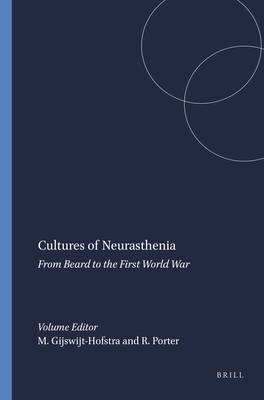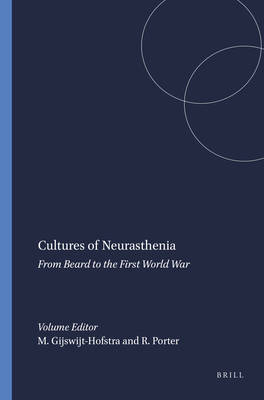
- Afhalen na 1 uur in een winkel met voorraad
- Gratis thuislevering in België vanaf € 30
- Ruim aanbod met 7 miljoen producten
- Afhalen na 1 uur in een winkel met voorraad
- Gratis thuislevering in België vanaf € 30
- Ruim aanbod met 7 miljoen producten
Zoeken
Cultures of Neurasthenia
From Beard to the First World War
€ 248,95
+ 248 punten
Omschrijving
Neurasthenia, meaning nerve weakness, was 'invented' in the United States as a disorder of modernity, caused by the fast pace of urban life. Soon after, from the early 1880s onwards, this modern disease crossed the Atlantic. Neurasthenia became much less 'popular' in Britain or the Netherlands than in Germany. Neurasthenia's heyday continued into the first decade of the twentieth century. The label referred to conditions similar to those currently labelled as chronic fatigue syndrome. Why this rise and fall of neurasthenia, and why these differences in popularity
This book, which emerged out of an Anglo-Dutch-German conference held in June 2000, explores neurasthenia's many-sided history from a comparative perspective.
This book, which emerged out of an Anglo-Dutch-German conference held in June 2000, explores neurasthenia's many-sided history from a comparative perspective.
Specificaties
Betrokkenen
- Uitgeverij:
Inhoud
- Aantal bladzijden:
- 412
- Taal:
- Engels
- Reeks:
- Reeksnummer:
- nr. 63
Eigenschappen
- Productcode (EAN):
- 9789042009318
- Verschijningsdatum:
- 1/01/2001
- Uitvoering:
- Hardcover
- Formaat:
- Genaaid
- Afmetingen:
- 155 mm x 230 mm
- Gewicht:
- 806 g

Alleen bij Standaard Boekhandel
+ 248 punten op je klantenkaart van Standaard Boekhandel
Beoordelingen
We publiceren alleen reviews die voldoen aan de voorwaarden voor reviews. Bekijk onze voorwaarden voor reviews.










